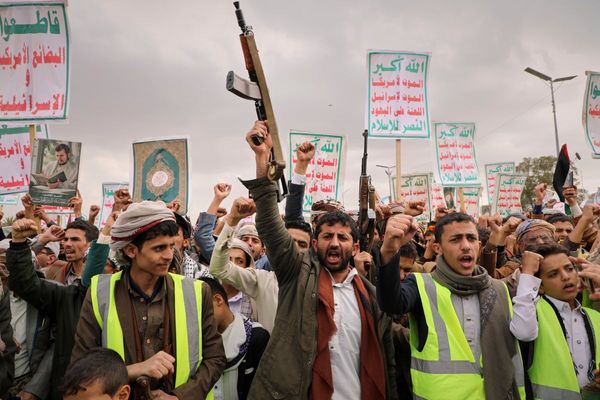The exact dates are hazy after 80 years, but Juanita Heparia's memories of running for cover as bombs fell around her house are vivid.
Ms Heparia, then aged two, was asleep in her house the day Japanese planes appeared over the town.
"My father heard this plane coming over and he said it wasn't one of our planes — he said it sounded different," she said.
"He told mum and my older sister to run, so she grabbed my other sister, Sally.
"My dad ran too, but when they looked around for me – I was only small – mum said, 'She's sleeping in the house'. So he had to run back."
The house Ms Heparia had been left asleep in was one of the few casualties of the air raid on March 22, 1942.
Ms Heparia says she remembers fleeing towards the Katherine aerodrome – now the site of a museum – where the majority of the bombs were unleashed.
"The bombs were falling all around us," she said.
"We were lying down flat on the ground."
'Daisy cutters' rain on Katherine
Just after lunchtime Katherine was attacked by nine "Betty" bombers from the Japanese Navy flying in V formation, in the southernmost point of the bombing raid on the Northern Territory.
While Darwin bore the brunt of 70 attacks over two years, the raid shocked the 300 or so Katherine residents, who thought their location would keep them safe.
About 90 bombs known as "daisy cutters", according Katherine Museum curator Simmone Croft, were dropped over the aerodrome, Knotts Crossing and the Manbulloo base.
"As far as infrastructure goes, not much was damaged," she said.
One man, Rodger "Dodger" Kodjalwal, who had been working as an orderly at the Katherine Hospital, was killed when he ran outside in fright.
Another man known as Hector died about a month later from his injuries.
Ms Croft said a man named Noel Hall lost the tips of his fingers in a hail of shrapnel.
For the past two decades Ms Croft has been pivotal to the annual commemoration of the bombing of Katherine, which today will see a single F-35A Lightning II aircraft from the Tindal RAAF base speed over the Katherine Museum at 850 kilometres per hour.
While the bombing event was devastating for the town and the families separated in the evacuation, Ms Croft said it "put Katherine on the map".
"It was like an injected force of infrastructure post war," she said.
"Locals came back and started building up the town again — instead of humpies, solid metal structures were built and it turned Katherine into a much larger town than if it had just been left alone."
Taken after the flight
Ms Heparia remembers hiding in the scrub with her family for what felt like hours until Katherine finally fell quiet again.
Days later women and children were evacuated by train south to Adelaide — but the tragedy was far from over for Ms Heparia and her siblings, who were forcibly separated from their mother due to an array of government policies.
It is a time Ms Heparia says is "painful" to look back on.
"My sister and I were taken by Home Affairs," she said.
"When we were down in the home a lot of us little girls went hungry … we were starving.







